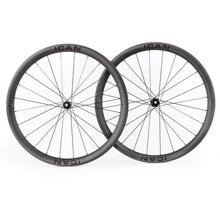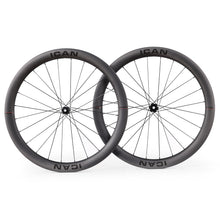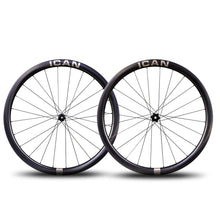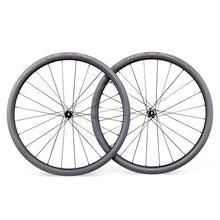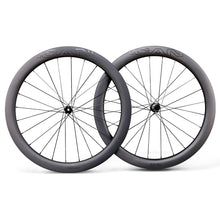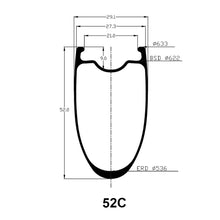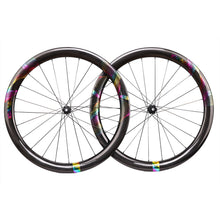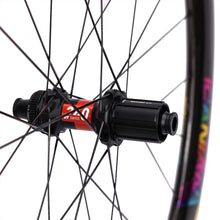News
Is Carbon Fibre Better Than Aluminum?
Carbon is often considered to be the ultimate material for making bike frames. It is the material that bike magazines and blogs want us to drool over. They are guiding us to cracking open our credit card and spending a lot of money.
Aluminum is often seen as the material you find on entry-level bikes. Your first road bike or mountain bike will have an aluminum frame. Is aluminum though just an entry-level material and can it compete with carbon fiber or is carbon just simply better?
Longevity
Which will last longer carbon or aluminum? It is considered a rule of thumb that aluminum has the shortest life span of any frame material. I’m sure we all know that one person though who still has their aluminum frame from the 1990s. It is worth always remembering that anecdotal observations are not data points.

You can expect an aluminum frame to last around 5 to 10 years. The numbers here do depend on a lot of circumstances. Obviously, a crash will shorten the life, even if you can’t see the damage. There will be too much stress on the frame. Being overweight on the bike and running over-inflated tires can fatigue your frame. If you just leave it sitting in your garage though it’ll definitely last longer than 10 years. It is fatigue that will slowly kill an aluminum frame.
Which brings us to carbon, carbon technically doesn’t have a fatigue life. It will virtually last forever. Many people might then want to point out that carbon might be weaker and will explode into a million pieces if you have a crash.
Carbon is susceptible to a high impact concentrated in a small area. The force required to do this will also dent an aluminum frame. The difference here is that you can safely go and get a carbon fiber repair done to your frame. A dent in an aluminum frame generally leads to a cracked tube or snapped frame. The problem with aluminum is that rewelding or patching a frame is considered unsafe and the repair will only last a small time.
Comfort
Both aluminum and carbon can be made to feel comfortable. In principle, though carbon will generally feel more muted against road chatter. You’ll still notice it, but it will feel softer, this is because the resin in carbon will help eliminate high-frequency chatter. Both aluminum and carbon fiber can be shaped to bring compliance or stiffness to the table.
Higher end aluminum frames will generally be hydroformed to bring in the characteristics that the engineer wants. Hydroforming is where a traditional tube is placed in die/, and fluid is pushed through at very high pressure. By shaping the tube this way, the engineer can get the aluminum to ride in a certain way.
Metal tubes are isotropic, and this means that their mechanical properties are the same in every direction. Being isotropic means that metal tube can resist loads in all directions. Have you then ever squeezed a carbon frame? In some direction, you can press the tube. That is because carbon frames are anisotropic. Carbon’s properties are then dependent on the direction of load.

That is why you hear about carbon fiber layup. Carbon will be the strong direction of the fiber. You then place multiple sheets, in a similar way to laminating wood, to build strength in varying directions. It is then possible to move these sheets around to build in the strength or comfort that the engineer is looking for.
Weight
Weight is a big issue and is the point everyone will always want to talk about and discuss. The quick and easy answer is that a good carbon frame will be around 1 lb (450 g) less than a good aluminum frame. The saving of those 450 grams is why you’ll find the pros riding carbon over aluminum. The question is, do you want to save the weight?
Research has been done that shows if you take a 15 lbs bike (the UCI weight limit) and ride it up a 7% incline for 3 miles and compare it to a 20 lbs bike you’ll be going 6 seconds faster, which is probably great if you’re a racer or after Strava KOMs.
If you think the weight will be nice to save, generally, you will be looking at paying around $800-$1000 more for this weight saving. It might now seem too expensive to be able to make that jump. You could then look at some direct to consumer brands.
Cost
As we just mentioned going carbon will cost you more money. The only person who can decide if it is worth the extra expense is you. The main reason for the higher cost is that making a good carbon fiber frame is more labor-intensive than building an aluminum frame. You can find up to 500 pieces of carbon fiber cloth in a carbon frame.
We at ICAN though can help to bring the cost of entry to buying a carbon bike or frame down for you though.
At ICAN we specialize in building high-end carbon fiber cycling products. Many of our products are constructed using Toray T700 carbon fiber, and our higher-end products are manufactured from a mix of Toray T700 and T800 carbon fiber.
Using Toray pre-imped cloth allows us to layup the carbon in a pattern that brings you comfort while also bringing you stiffness and speed. Our frames are also incredibly light, so you will get that advantage for when you’re out climbing.
How do we keep the cost down?
The reason we keep the costs down is that we supply directly to you from our factory floor. No middlemen are trying to take a cut. The frame is built, boxed, and shipped to your door. The other way we keep costs down is that we don’t have a huge marketing department.
By just focusing on building the best carbon framesets and not worrying about cool names or glossy photo shoots we can pass the savings onto you. That is why our carbon fiber frames come in at the same price as great aluminum. That way you get all the benefits of a carbon fiber frame without the downside of its higher cost.
32 comments
-
Posted on by
-
Posted on by
-
Posted on by
-
Posted on by
-
Posted on by
- Previous
- 1
- 2
- 3
- 4
- 5
- 6
- 7
- Next
